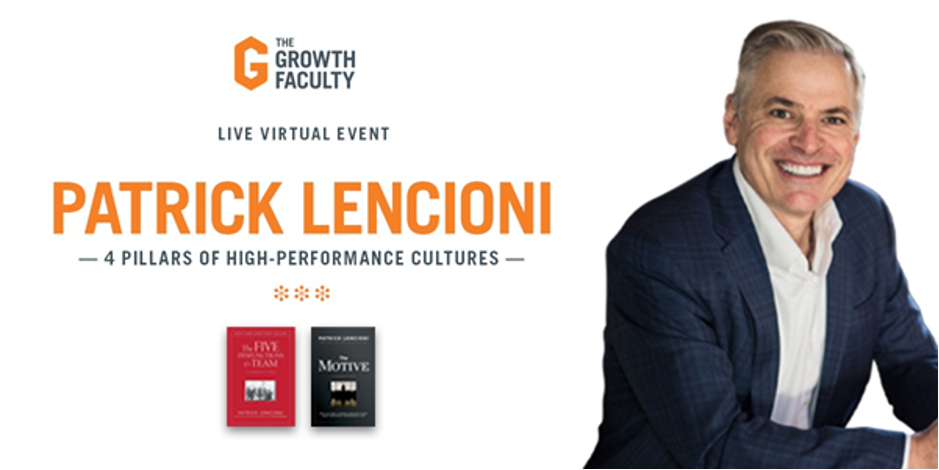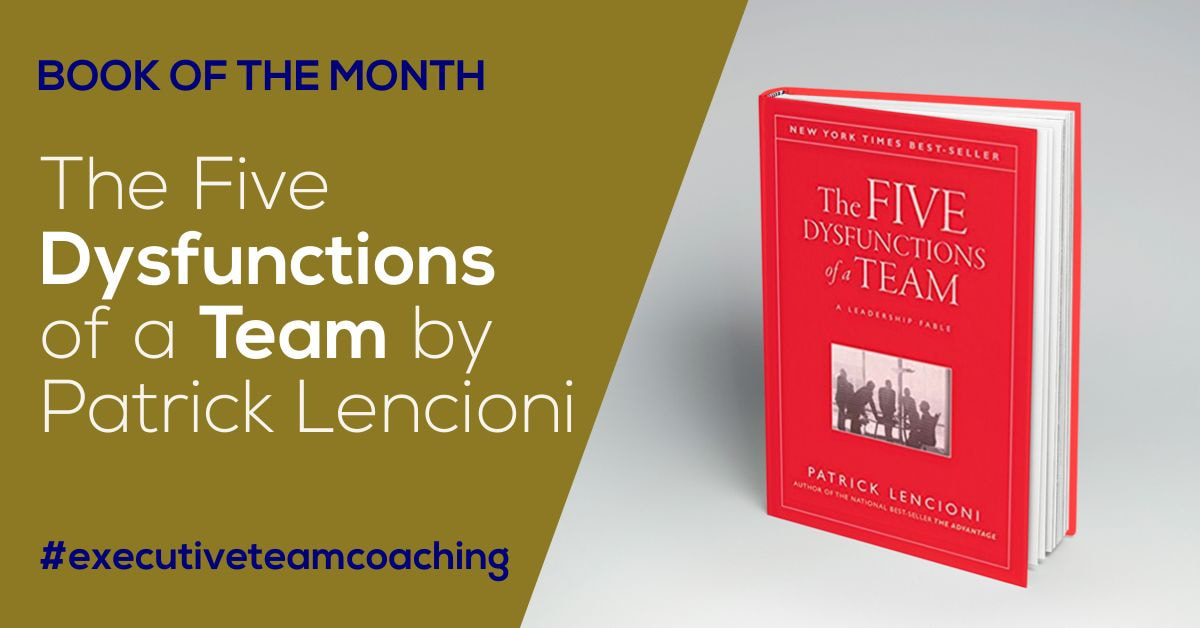|
In the previous 5 minute growth tip article, I shared some tips for developing a successful strategy to compete and thrive in your market. Yet, developing a great strategy takes more than a framework. It takes a high performing leadership team. That, in turn, takes high performing leaders.
As a CEO, president, owner or entrepreneur, you’ve likely had department heads on your team that didn’t meet your expectations or were poor leaders. It can be frustrating to be repeatedly disappointed or to have to continuously push, cajole or just grin and bear it. Yet, it’s entirely feasible to resolve these headaches and prevent them from happening in the first place. This is about ensuring that, on the leadership team, we have the right people in the right seats doing the right things in the right way. Right Seats First, we want to ensure we have the right seats - the right roles needed on our leadership team - eg. sales, marketing, operations, finance, accounting, human resources, information technology, etc. We want to consider that each team member is likely playing more than one role. By thinking of it this way, we can identify what functional roles are being played, and whether the right roles exist on the team. We also want to get each leader, and the whole team, on the same page about what each role means. This includes being clear about the expectations for each role in terms of results (eg. role: marketing => results: qualified leads). It’s best if these results expectations are quantified with targets (eg. X number of qualified leaders per month). The results, metrics and targets are the productivity side of each role. We also want to be clear about the behavioural side. This includes defining the behavioural expectations needed across the leadership team and across the company. These behaviours are captured to a large degree in our core values. These core values distill the essential behaviours for working in the company, and also across the leadership team. This is what enables great teamwork, productive conversations and problem-solving, developing a strong strategy and execution plan, and coordinating to execute. Clarity on core values is also critical because leaders living them is one of the main ways the company’s culture is brought to life among employees. Right People With productivity and behaviour expectations clear, we want to ensure we have the right person in each seat. We want to ask ourselves: is each person on the leadership team meeting our expectations...in terms of both the results expected in their role AND the behaviours captured in our core values? Furthermore, if we want to build a thriving company, we’ll need A-players. We define A-players as being among the top 10% performers for the specific role and for the pay we can afford, AND they live and breath all of our core values. Right Things Being a top 10% leader doesn’t just mean doing a great job at one’s function: marketing, accounting or human resources, etc. It means getting great productivity from their people - both quantity and quality of work. This takes strong planning, delegation, mentoring, coaching and monitoring skills. Often leaders tend towards one of two extremes: micro-managing or laisser-faire management. Strong leaders will stay involved enough to monitor and be supportive while at the same time letting capable employees use their skills, be self-sufficient and take initiative. A-player leaders create an environment in their department that inspires employees to perform at their best. Right Way When it comes to leaders who don’t live our core values, it’s usually a dead end. Because a person’s values can’t really be changed. People behave according to what they believe. If they grew up believing that learning and adapting is valuable in its own right, they’ll learn and adapt on the job. If they believe that tradition, duty and compliance are noble, they won’t behave in adaptable ways. And if they don’t believe in one of our core values, there’s not much we can do about it. We can coach them on that core value, and they may start behaving more in alignment with it for a while. But often, they’ll slip back into their habits. This means that very often, a leader that isn’t living one or more of our core values never truly will. And so they’ll never be an A player leader, at least in our company. Addressing the Gaps As CEOs, presidents and owners, we can often be hesitant to let a leader go who doesn’t fit. Our underlying concern is often that maybe we weren’t clear on our expectations or maybe we didn’t coach the leader enough or very effectively. So, it can be reassuring to start by establishing clear expectations and providing better coaching where needed. At the end of the day, the leader may still not meet our expectations. But at least we’ll know that we did what we could to support them. A good practice is to, every quarter, ask ourselves how each of the members of our leadership team are performing both in terms of results AND core values. Then, for any team members that aren’t performing, ask, what will I do about it this quarter? Will I coach them or cut the chord? If we keep coaching the leader on the same issue quarter after quarter, we should not only question their leadership, we should question ours too. A caution: sometimes a leader’s poor performance IS in fact our fault. It’s entirely possible for a CEO to create an environment where people can’t perform well. Maybe we’re the micro-manager, or the laisser-faire manager. Or we set a poor example by not being accountable or not living some of our core values. If we have just one or two leaders whose performance is in question and the majority of the leaders reporting to us are performing great, we do have a people issue. Yet, if most or all of our leaders are struggling, chances are our own leadership is what needs work. Working Through Our Own Stuff Usually, the decision to let a leader go isn’t hard. Once we think it through, it’s often pretty clear. It’s just that we avoid thinking it through. We avoid it because of how it feels. It’s sad. It’s disappointing. It’s nerve-racking. We can feel guilty or like a failure. If we acknowledge, accept and process those feelings, we can then face the facts of the situation and come to a logical, firm conclusion. This can usually be tackled with some pros and cons thinking, considering all the impacts of the leader, on both the culture and performance of their department, the leadership team and the company as a whole. Replacing a Leader It’s one thing to come to realize and accept that a leader has to go. It’s another to feel confident we can successfully replace them with an A-player. If you’re concerned about this, you probably have a recruiting and selection problem. And you’re not alone. The average hiring process picks an A-player 25% of the time. Implement the Top Grading or A-Method hiring process and you’ll knoch that up to an 80 or 90% success rate. Replacing a top level leader is a great reason to make that change. You’ll get two trees with one stone: an A player leader and a drastic improvement in hiring throughout the company. As Jim Collins found in his research for Good to Great, the foundation of a thriving company is “disciplined people”. This includes being a Level 5 leader (determined AND humble) and getting the right people on the bus in the right seats on our leadership team. Only then can we create a great strategy collaboratively with our leadership team, to achieve efficient team buyin. And with buyin and a great leadership team, we can implement the right decisions and system to grow more rapidly, profitably and sustainably. Right? Not quite. This is where great execution comes in. In this next article, I’ll share the common challenges with executing a strategy and the three key execution disciplines to minimize drama and maximize profitability. How can you have more A-players in your company? To find out how to have stronger talent and leaders to grow more easily, quickly and profitability, AND enjoy the ride, try our complimentary Agile Growth Checklist. This self-service questionnaire takes 5 to 10 minutes to complete. You'll receive the checklist with your responses immediately. Within 24 hours, you'll receive a compiled report highlighting areas to improve. Complete section 2 to check your A-player processes. Or complete all 7 sections to find out how your company is doing in each of the 7 areas needed to produce more rapid, profitable and sustainable growth. This report is complementary and involves no obligation. ‘‘Working on health works. It’s good for your people and for your bottom line.” McKinsey (2017) In partnership with The Growth Faculty, Wellspring Growth Systems is delighted to offer you a $50 discount to see Patrick Lencioni in a live virtual event this April: Patrick Lencioni - 4 Pillars of High-Performance Cultures. New York Times best-selling author of The 5 Dysfunctions of a Team (plus 11 other books), Patrick Lencioni is the global pioneer of the organisational health movement. McKinsey research shows a healthy organisation delivers roughly 3x the returns to stakeholders than less healthy companies. And, companies that institute initiatives to improve health see tangible performance increases in as little as six months. Named "one of the most in demand speakers in America" by the Wall Street Journal, Patrick Lencioni will deliver a fast-paced, highly practical event teaching business leaders and their teams how to create a healthy organisation and high-performing culture that takes advantage of the talent within their teams. YOU WILL LEARN: Practical and highly entertaining, over 2.5 hours you’ll learn:
You will leave with immediately actionable frameworks and tools that have transformed thousands of businesses globally. YOU'LL BE BLOWN AWAY BY THE INTERACTIVE VIRTUAL VENUE Patrick Lencioni will present live in real-time via The Growth Faculty's bespoke virtual venue, now rated 9.5/10 by 1000s of business leaders. PAST DELEGATES OF PATRICK LENCIONI SAID... "Thought-provoking and challenged the status quo. Practical strategies to build high performing teams." Kate Massey, JCurve Solutions "Patrick Lencioni was a truly engaging and inspiring speaker." Yvonne Faulks, Grant Thornton Australia "Content was the best I've been exposed to..." Tom Keady, Colliers *** “Not finance. Not strategy. Not technology. It is teamwork that remains the ultimate competitive advantage, both because it is so powerful and so rare.” Patrick Lencioni STANDARD RATE: $295 USD | WELLSPRING GROWTH SYSTEMS NETWORK: $245 USD Tuesday 27th April 2021, 7pm SK / 8pm MB How can you create a high performance culture? To find out how you can strengthen your culture to grow more easily, quickly and profitability, try our complimentary Agile Growth Checklist. This self-service questionnaire takes 5 to 10 minutes to complete. You'll receive the checklist with your responses immediately. Within 24 hours, you'll receive a compiled report highlighting areas to improve. This report is complementary and involves no obligation. Complete sections 1 to 4 to check your high performance culture*. Or complete all 7 sections to find out how your company is doing in each of the 7 areas needed to produce more rapid, profitable and sustainable growth. *Many of Patrick Lencioni’s best practices are included in our Agile Growth Checklist, as well as many others developed by world-renowned business leaders, researchers and professionals.
I’m always delighted when I read a Patrick Lencioni book. I enjoy both his clear take on things and his user-friendly writing style. So reading his best-seller, The Five Dysfunctions of a Team, was a no-brainer. In the business fable style that Lencioni is famous for, he tells the story of the leadership team of a technology company. In it, he shows how leadership teams can use his simple model to deliberately improve their alignment, execution and results. Lencioni covers the five critical dysfunctions of a team, which each build on the other. They include: 1) absence of trust - not feeling comfortable being open, vulnerable and real - which leads to 2) fear of conflict - leaving things unsaid and avoiding sharing differing opinions - and therefore 3) lack of commitment - team members don't feel decisions are appropriate or feasible - which results in 4) avoidance of accountability - hiding performance, blaming or making excuses - and therefore 5) inattention to (team) results - not focusing on true progress and organizational impact. After the story, further details on the model follow with tips for working on each dysfunction. Out of all the team effectiveness frameworks I’ve studied and used, this one is the simplest. Yet, it’s still completely relevant and applicable. The Five Dysfunctions framework is also one of the tools in the Scaling Up system and the 7 Attributes of Agile Growth framework that we use with CEOs and leadership teams of mid-sized prairie-based companies. Book: 229 pgs, 3h45m audio. Soundview Summary: 8 pgs, 19m audio. Get-Abstract summary: 5 pgs, 10m audio. How can you strengthen your leadership team? To find out what you can improve in your leadership team to grow more easily, quickly and profitability, try our complimentary Agile Growth Checklist*. This self-service questionnaire takes 5 to 10 minutes to complete. You'll receive the checklist with your responses immediately. Within 24 hours, you'll receive a compiled report highlighting areas to improve. This report is complementary and involves no obligation. Complete section 1 and 4 to check your leadership team* and accountability processes*. Or complete all 7 sections to find out how your company is doing in each of the 7 areas needed to produce more rapid, profitable and sustainable growth. *All of Patrick Lencioni’s best practices are included in our Agile Growth Checklist, as well as many others developed by world-renowned business leaders, researchers and professionals.
For those who weren’t able to make it to the Gravitas Impact Global Interactive Leadership Summit on February 25th, I thought I’d share a brief summary of some of the key things we learned from the presenters and discussed in our CEO peer break-out groups.
The summit started with futurist Anne Ward providing guidance for leadership teams on spotting and analysing trends, followed by Keith Cupp, CEO of Gravitas Impact Premium Coaches, on the new 7 Attributes of Agile Growth monograph and the key characteristics of great CEOs, and then Michael Bungay Stanier, author of The Coaching Habit and The Advice Trap, on how to tackle “hard change” (as opposed to “easy change”). Futurist Anne Ward encouraged the CEOs and leadership team members in attendance to identify emerging trends by using solid data, in order to accurately inform decision-making. One example she shared was Dominoes Pizza. With their data driven approach, they’ve driven the value of the company from $3 per share, ten years ago, to over $300 per share. Speed of delivery had been Dominoes’ primary competitive advantage for many years...until competition caught up and customer preferences changed. Through the use of data, their executive team discovered that their customers really yearned for great tasting pizza. Their leadership team and product development team leaned into their data to identify what their customers liked, what tastes were emerging, and then to test and experiment with different offerings. One challenge for executive teams is bias. It’s easy, as individual leaders or as a team, to fall prey to omission bias (the tendency to avoid data or action), confirmation bias (the tendency to make data interpretations that confirm our beliefs) or loss aversion bias (the tendency to avoid loss rather than create gain, thereby avoiding change and taking risks). One key insight is that the resulting health and strength of the organization will be limited by the clarity of mind of the weakest leader on the leadership team. Our very own Keith Cupp, CEO of Gravitas Impact, provided an overview of the latest Gravitas Impact monograph, titled "The 7 Attributes of Agile Growth." This is the flagship monograph that provides an overview of our growth framework by the same name. When we build a company, we can wing it, or we can implement a proven framework. The 7 Attributes of Agile Growth, which I think of as an evolution of, and improvement on, the Scaling Up system, is a framework that’s comprehensive, works regardless of industry, and is flexible and scalable – from startup to billion dollar companies. The 7 Attributes of Agile Growth monograph provides an overview of the 7 areas every executive team needs to work on and be aligned on together: Leadership, Talent, Strategy, Execution, Customer, Systems and Profit. My colleagues and I, certified in the 7 Attributes, facilitate, coach and advise leadership teams through building a plan collaboratively, using our version of a one page strategic plan. We then work with the team on a monthly and quarterly basis to assess progress and apply any one of the 42 tools in the framework to solve problems and make key decisions for the future. Keith also shared his insights on the three recurring leadership characteristics that he’s found in his research over the years by studying great business thought leaders like Adam Grant, Patrick Lencioni and Jim Collins. Those three leadership characteristics are: ambition, humility and confidence. With the humility to be curious and put others first, and the discipline of thought and action to move things forward, these CEOs learn, discover and execute with excellence. And with the support of a strong CEO and executive team coach, they can also develop great confidence to lead and grow others and their organization. The key take-away: the CEO is either the primary enabler or the bottleneck to greatness. Michael Bungay Stanier is the author of The Coaching Habit, a best selling book I use to complement LIz Wiseman’s Multipliers (recall she spoke at the June 2020 leadership summit). He shared some insightful tactics for tackling Hard Change as opposed to Easy Change. Easy change is a change where we identify where we are now and where we want to be, we learn something and/or do something, we practice and we make the change happen. It’s pretty straight forward and usually successful. Hard Change is a change that doesn’t come so easily to a person. It’s not about doing something differently, it’s about becoming someone different. It’s a fundamental rewiring of how we approach life. What’s also interesting is that a change that is hard for one person may be easy for another, and vice versa. It’s not about the change per say, but about how substantial of a change it will be for a particular person. One key insight is that we all struggle with Hard Change because not changing serves us in some way… even though we may not realize it. A way around this is to identify out loud or in writing the reasons to not to take on the change (in addition to the reasons to do it). This exercise will uncover our resistance to the change - the comfort, status, power, etc. that keeps us stuck. Then we can consciously evaluate whether those benefits of not changing really outweigh the benefits of changing. And if not, we can choose to be ok with not keeping the benefits of the status quo so that we can move forward with the hard change. Michael also shared some interesting tools for defining what he calls a “worthy goal”. A worthy goal maximizes our level of motivation and complements the reduction in resistance we’ve accomplished with the previous exercise. Bungay Stanier will have a new book coming out early next year going into detail on tackling Hard Change. I’ll be watching out for it! Our next Gravitas Impact Global Interactive Leadership Summit will be June 17th. Pencil it in your calendar! It’s sure to be another excellent learning experience for CEOs and their leadership team members. How can you improve your leadership? To find out how you can improve your leadership to grow more easily, quickly and profitability, try our complimentary Agile Growth Checklist . This self-service questionnaire takes 5 to 10 minutes to complete. You'll receive the checklist with your responses immediately. Within 24 hours, you'll receive a compiled report highlighting areas to improve. This report is complementary and involves no obligation. Complete section 1 and 2 to check your leadership processes. Or complete all 7 sections to find out how your company is doing in each of the 7 areas needed to produce more rapid, profitable and sustainable growth. |
Archives
December 2029
Categories
All
|






 RSS Feed
RSS Feed
